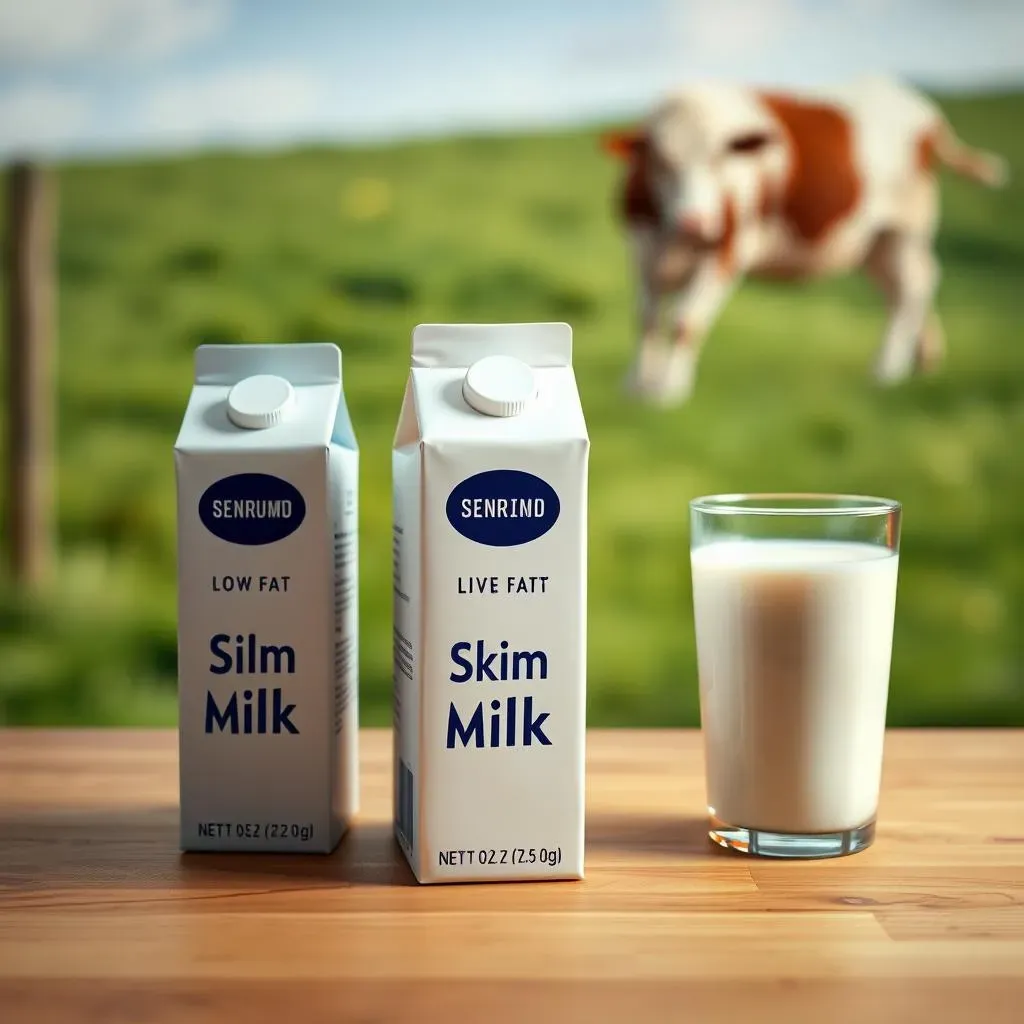Table of Contents
Milk. It's been a staple in our diets for ages, but the choices can be confusing. Whole, low fat, skim—what’s the real difference? Is whole milk the villain it's made out to be, or are we missing out on some benefits? If you're like me, you've probably stood in the dairy aisle, scratching your head, wondering which carton to grab. This article is your guide to navigating the milk maze. We'll explore the world of dairy, breaking down the differences between whole, low fat, and skim milk. We'll get into the nitty-gritty of saturated fat, tackle the whole "weight gain" worry, and even see if whole milk can offer some surprising health perks. We'll also look at why skim milk might be the better choice for some. By the end, you’ll have a clear understanding of the low fat milk vs skim milk debate, and you'll be able to confidently choose what's right for you. Let's dive in and uncover the truth about what's in your glass.
Understanding the Different Types of Dairy Milk: Whole, Low Fat, and Skim
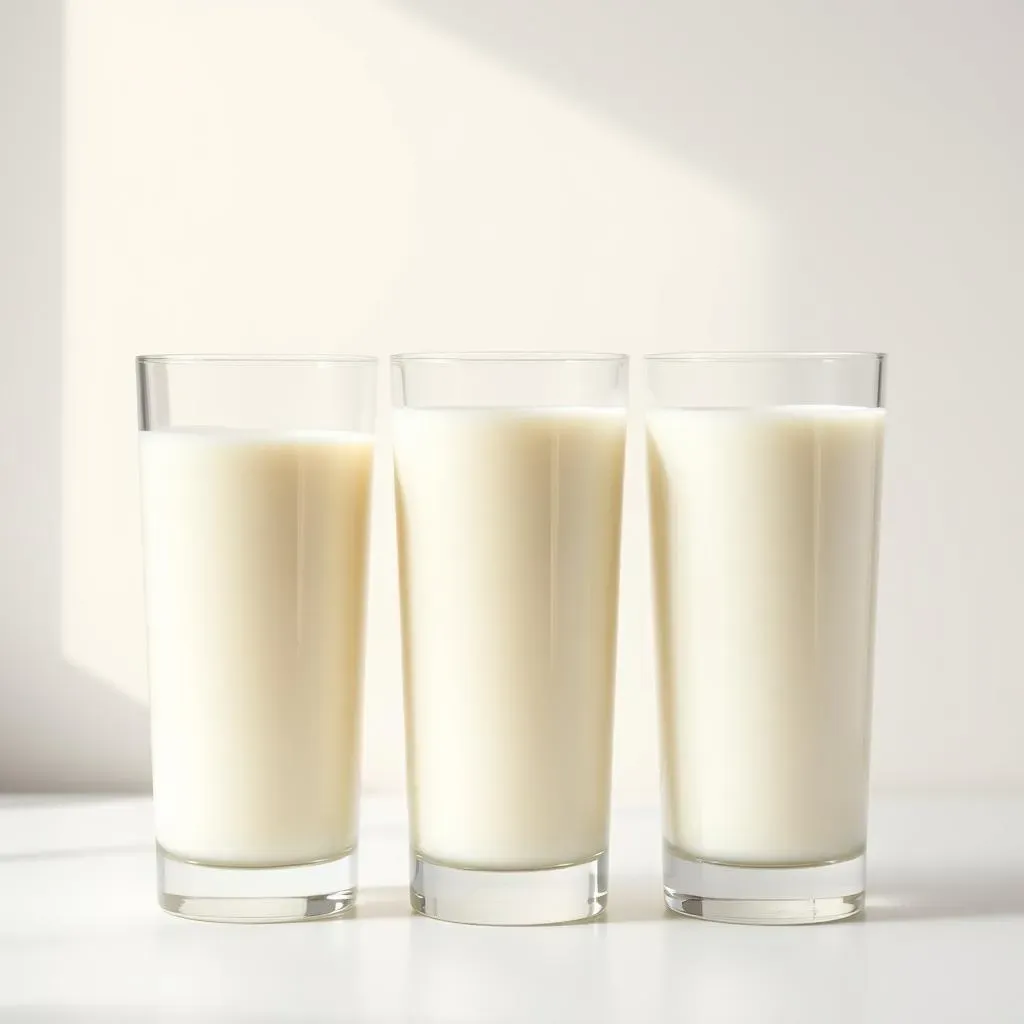
Understanding the Different Types of Dairy Milk: Whole, Low Fat, and Skim
The Basics of Milk Fat
Okay, so let's talk milk. It's not just one thing, right? You've got your whole milk, your low-fat milk, and your skim milk. What makes them different? It all comes down to the fat content. Think of it like this: whole milk is the "full package," with all the natural fat that comes from the cow. This fat gives it that rich, creamy taste we all know. Then, you've got low-fat milk, which has some of the fat removed. And finally, skim milk is where most of the fat is taken out, leaving you with a lighter, less creamy version. It’s like choosing different levels of richness in a sauce, each with its own unique texture and flavor.
How Milk is Processed
So, how do they actually get different types of milk? Well, it’s all about processing. After milk is collected, it goes through a process where the fat is separated from the liquid part. For low-fat milk, a portion of the fat is taken out, but they put some back in, usually around 1% or 2% fat. With skim milk, they remove almost all of the fat. This separation process is what gives each type of milk its unique characteristics. It's pretty neat when you think about it—how they can take the same liquid and tweak it to create different products.
Milk Type | Fat Content | Taste & Texture |
|---|---|---|
Whole Milk | Around 3.25% | Rich, creamy |
Low-Fat Milk | 1% or 2% | Lighter than whole, still creamy |
Skim Milk | Less than 0.5% | Light, watery |
Beyond the Fat: What Else Matters?
Now, it's not just about the fat. Each type of milk also has slightly different amounts of other nutrients. For example, because fat-soluble vitamins (like A and D) are found in the fat part of milk, they are often added back into low-fat and skim milk to make sure you’re still getting those important vitamins. Protein and calcium levels are pretty similar across all three, which is good news. So, while the fat content is the main difference, it’s worth knowing that they’re all still packed with goodness. It's about finding what suits your taste and dietary needs best. It is not a one size fits all kind of thing.
Whole Milk: Is It Really the Unhealthy Option?

Whole Milk: Is It Really the Unhealthy Option?
Okay, so for years, whole milk got a bad rap. It was seen as this villain, packed with fat that would clog your arteries and make you gain weight. But, hold on a second, is that really the whole story? The truth is, things are a bit more complicated than that. It's easy to just label whole milk as "bad" because of its higher fat content, but we need to look at the bigger picture. Remember, whole milk is the least processed of the three, it's basically milk straight from the cow (with some pasteurization for safety, of course). So, before we write it off completely, let's take a closer look at what this "full-fat" option actually brings to the table.
The Truth About Saturated Fat: What You Need to Know
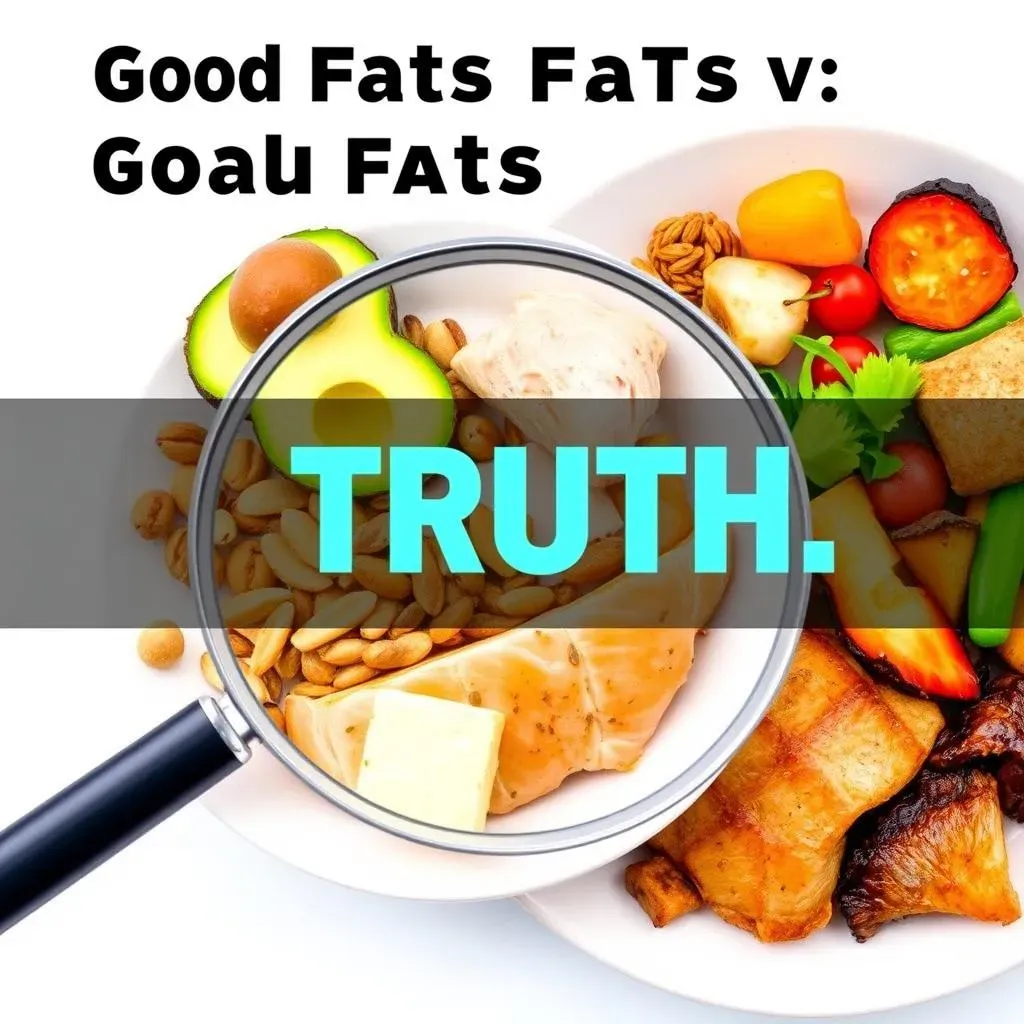
The Truth About Saturated Fat: What You Need to Know
The Saturated Fat Scare
Okay, let's get real about saturated fat. For years, it's been the dietary villain, the thing we were told to avoid at all costs. We heard it was the direct cause of heart disease, and that it would raise our cholesterol levels through the roof. It's like we were all living in a low-fat, fat-free world, thinking we were doing the right thing. But the story is more complex than that. It turns out, the science isn’t as clear-cut as we once believed. It's like finding out that the monster under your bed is just a pile of clothes, it's not as scary as it seemed at first.
Rethinking Saturated Fat
So, what's changed? Well, recent studies have started to question the direct link between saturated fat and heart disease. It's not that saturated fat is suddenly "good," but the idea that it's the sole cause of heart problems is being challenged. Some researchers are even suggesting that moderate amounts of saturated fat might not be as harmful as we once thought. It's like when you finally understand a tricky math problem, and it suddenly makes sense. There is a lot to unpack here, and the truth is, the science is still evolving. The key here is "moderate," not "all-you-can-eat."
Type of Fat | Traditional View | Current Understanding |
|---|---|---|
Saturated Fat | Bad for heart health, increases cholesterol | May not be as harmful as once thought, moderate intake might be okay |
Whole Milk and Weight Management: A Complex Relationship

Whole Milk and Weight Management: A Complex Relationship
Alright, let's talk about the elephant in the room: weight. Does drinking whole milk make you gain weight? It's a common concern, and honestly, it's not a simple yes or no answer. The idea that whole milk automatically leads to weight gain comes from the fact that it has more calories and fat than skim or low-fat milk. And yes, it's true, if you're adding a bunch of extra calories to your diet, you might gain weight. But, here's the thing: our bodies are complex machines, and it's not as simple as "fat equals weight gain." It's more about the overall picture of what you're eating and how many calories you burn. It's like saying that driving a car will always cause an accident, it depends on how you drive.
The relationship between whole milk and weight management is more nuanced than we once thought. Some studies suggest that people who consume full-fat dairy products might have a lower risk of obesity. This might seem counterintuitive, but it could be because the fat in whole milk can help you feel fuller for longer, potentially leading to fewer overall calories consumed throughout the day. It’s like having a satisfying meal that keeps you from snacking later. However, it is also true that if you are eating a lot of calories from other sources, adding whole milk on top of that may lead to weight gain. It’s all about balance, not elimination.
Factor | Whole Milk | Skim Milk |
|---|---|---|
Calories | Higher | Lower |
Fat | Higher | Very Low |
Satiety | May promote fullness | Less likely to promote fullness |
Can Whole Milk Actually Lower Your Risk for Chronic Disease?

Can Whole Milk Actually Lower Your Risk for Chronic Disease?
The Surprising Potential
Okay, so we've talked about the fat and the calories, but what about the bigger picture? Could whole milk actually have some health benefits? It might sound strange, but some studies are suggesting that whole milk might be associated with a lower risk of certain chronic diseases. It’s not a magic bullet, but there’s some intriguing research that’s worth exploring. It’s like discovering a hidden level in your favorite game, you didn’t know it was there, and now you are eager to learn more about it.
Metabolic Syndrome and Type 2 Diabetes
One area where whole milk is showing some surprising results is in relation to metabolic syndrome and type 2 diabetes. Some studies have found that people who consume full-fat dairy products might have a lower risk of developing these conditions. Now, this doesn't mean that drinking gallons of whole milk will cure diabetes, but it does suggest that the fat in whole milk might play a different role than we once thought. It’s like finding out that the villain in a movie actually had a good reason for their actions, it makes you think differently about the whole story. The key takeaway here is that whole milk is not necessarily the enemy when it comes to these diseases.
Infertility and Beyond
And the potential benefits don't stop there. Some research also suggests a possible link between whole milk consumption and a reduced risk of infertility. This is still a relatively new area of research, and more studies are needed to confirm these findings, but it’s an intriguing possibility. It’s like when you find a clue in a mystery novel, it’s not the whole solution, but it points you in a new direction. So, while we don't have all the answers yet, it's clear that whole milk is more complex than we initially thought. It is more than just a drink, it may have a positive impact on the body.
Potential Benefit | Evidence | Further Research Needed |
|---|---|---|
Lower Risk of Metabolic Syndrome | Some studies suggest a link | Yes |
Lower Risk of Type 2 Diabetes | Some studies suggest a link | Yes |
Reduced Risk of Infertility | Emerging research suggests a link | Yes |
The Advantage of Choosing Skim Milk: When Less is More
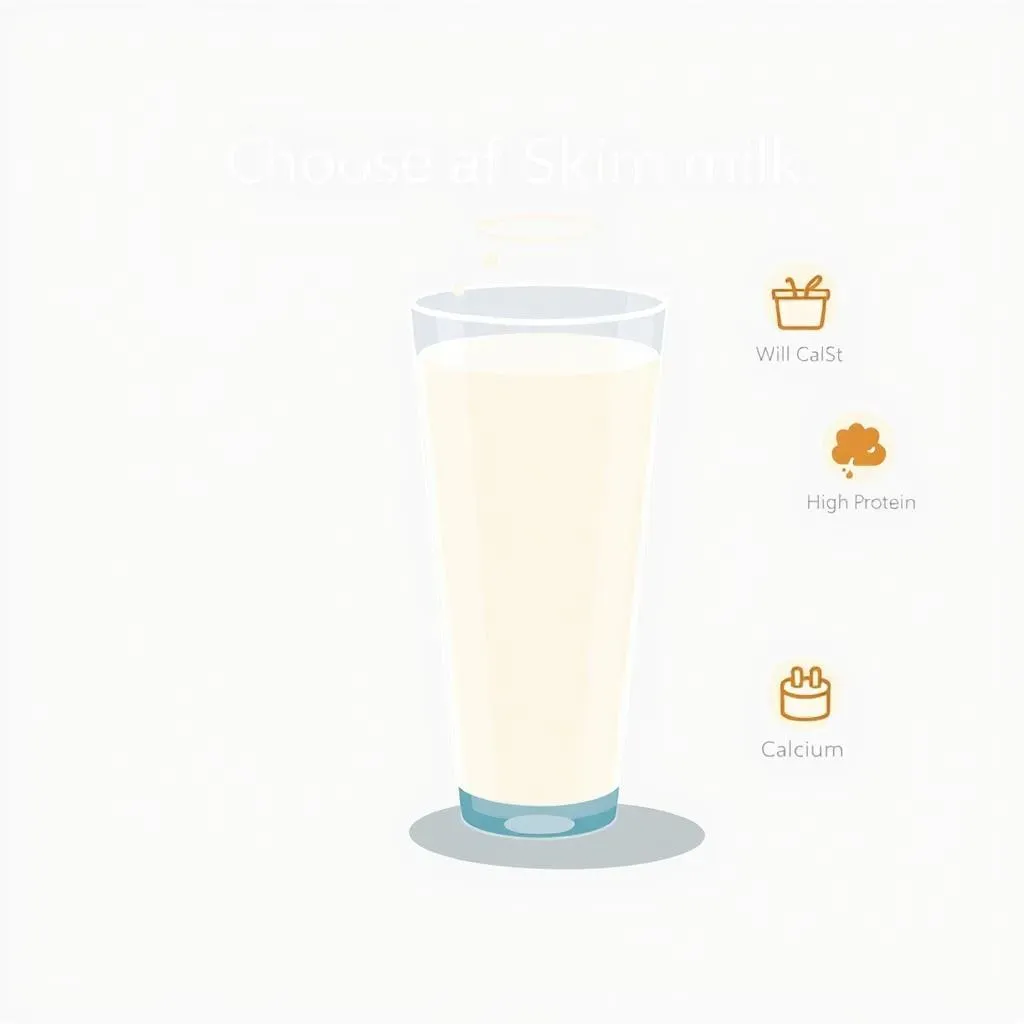
The Advantage of Choosing Skim Milk: When Less is More
The Calorie Conscious Choice
Okay, so we've spent some time looking at the potential benefits of whole milk, but let's not forget about skim milk. There's a reason it's been a popular choice for so many people. The most obvious advantage is that it's super low in calories and fat. If you're trying to cut back on calories or you're following a very low-fat diet, skim milk is a great option. It's like choosing a light and refreshing drink on a hot day, it does the job without weighing you down. It's a straightforward choice for those who want to keep their calorie count in check.
Because skim milk has almost no fat, it is a very light option, if you find the richness of whole milk too heavy, then skim milk might just be the perfect alternative. It's versatile too, you can use it in your coffee, smoothies, or even as a base for your morning cereal. It’s like a blank canvas, ready for whatever you want to add to it. It is a simple and effective way to reduce your calorie intake without sacrificing the nutritional benefits of milk. It's all about making small changes that can add up to big results.
Nutrient-Dense and Light
Don't let the low fat content fool you, skim milk still packs a nutritional punch. It has similar amounts of protein and calcium as whole milk, which is great for building and maintaining strong bones and muscles. Since they remove the fat, they usually add back the fat-soluble vitamins like A and D, so you're not missing out on those essential nutrients. It's like having the best of both worlds: you get the nutrients you need without the extra fat and calories. It's a smart choice if you want to maximize your nutrient intake while minimizing your calorie intake.
Nutrient | Skim Milk | Whole Milk |
|---|---|---|
Protein | Similar | Similar |
Calcium | Similar | Similar |
Vitamin A | Added | Naturally Occurring |
Vitamin D | Added | Naturally Occurring |
Calories | Lower | Higher |
When Skim Milk Shines
So, when should you choose skim milk over whole milk? Well, if you are on a very specific diet, or if you are just trying to cut calories without sacrificing nutrients, skim milk is your best bet. It’s perfect for situations where you want to keep things light and simple. Think of it as the "lean and mean" option, it gets the job done without any extra baggage. It is also a great way to get your daily dose of calcium and protein without the extra fat and calories. It's all about making informed choices that align with your goals and preferences. It is a versatile and effective option that can fit seamlessly into a wide range of dietary patterns.
Low Fat Milk vs Skim Milk: Which One Should You Choose?
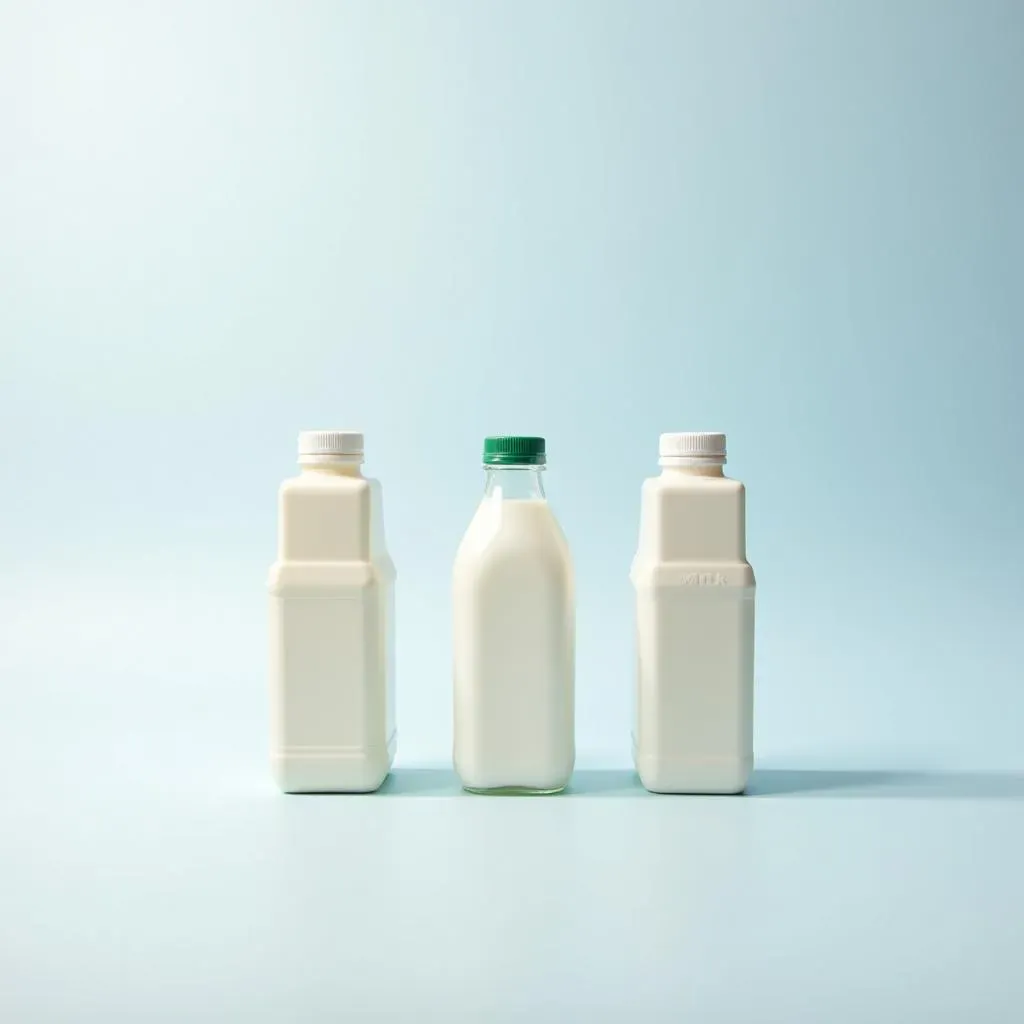
Low Fat Milk vs Skim Milk: Which One Should You Choose?
Okay, so we've looked at whole milk, low fat milk, and skim milk, and now it's decision time: which one should you actually choose? The truth is, there’s no single right answer, it really depends on your personal needs and preferences. If you’re someone who enjoys the rich taste of whole milk and you are not worried about the extra calories or fat, then there's no reason to shy away from it, specially since the fat is not as bad as they made it out to be. However, if you're trying to cut back on calories or if you prefer a lighter taste, then skim milk might be a great fit for you. And, low fat milk is also an option, it sits somewhere in between the two, it still has some of the creaminess of whole milk, but it’s not as heavy.
Ultimately, the best way to figure out what kind of milk to choose is to think about what you want from your diet. Are you looking for a more nutrient-dense beverage, or are you trying to reduce your calorie intake? Do you prefer a rich, creamy texture, or a lighter, more refreshing one? There's no right or wrong answer here, it's all about what works best for you. It's like choosing what kind of shoes to wear, you pick the ones that fit your feet and your activities. Just make sure you are making a choice that aligns with your health goals.
Consideration | Whole Milk | Low Fat Milk | Skim Milk |
|---|---|---|---|
Taste & Texture | Rich, creamy | Lighter than whole, still creamy | Light, watery |
Calorie Content | Higher | Moderate | Lower |
Fat Content | Higher | Moderate | Very Low |
Best For | Those who enjoy the flavor and don't mind extra calories | A good middle ground | Those who want to cut calories and fat |
The Bottom Line: Making Informed Choices About Milk

The Bottom Line: Making Informed Choices About Milk
Alright, we’ve journeyed through the world of milk, from the creamy richness of whole milk to the lightness of skim. We've tackled the saturated fat debate, explored the link between whole milk and weight, and even looked at potential disease-fighting benefits. So, what’s the final verdict? It’s simple: there’s no single “best” milk for everyone. The key is to make informed choices that fit your individual needs and preferences. Don’t get caught up in the hype or the fear-mongering. Instead, focus on what works for you, your body, and your overall health goals. Milk is just one piece of a larger puzzle, it is important to consider the overall picture. It is all about making choices that will benefit your health and make you happy.
Think of it like this: choosing milk is like choosing a pair of shoes, there is no one size fits all. What works for your best friend may not work for you. So, experiment, see what you like, and don't be afraid to change things up. The most important thing is that you are making choices that align with your health and taste. And remember, it is not about perfection, it is about progress. It is about making small changes that add up to big results. So, go ahead, grab that glass of milk, and enjoy it, knowing that you’ve made a choice that’s right for you.
Key Takeaway | Action |
|---|---|
No one-size-fits-all milk choice | Consider your individual needs and preferences |
Saturated fat is not as bad as once thought | Moderate intake may be okay |
Whole milk may have potential health benefits | Explore the research, but don't over do it |
Skim milk is a good choice for calorie control | Use it when you want a light option |
